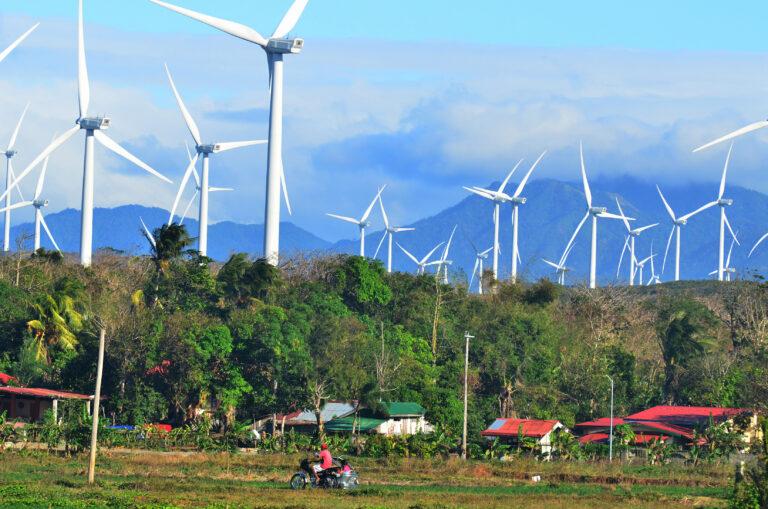During the EU-ASEAN Commemorative Summit held in Brussels on 14 December 2022, the European Commission and the Members of the Association of Southeast Asian Nations (ASEAN) agreed to launch an Energy Dialogue. With the aim of building a platform for cooperation and support for a sustainable transition in both regions, the Energy Dialogue is part of the Plan of Action to implement the EU-ASEAN Strategic Partnership 2023-27. The Action Plan focuses on political and security, economic, socio-cultural, and cross-pillar cooperation between the two regions, emphasising energy as a prominent domain for enhanced joint action and collaboration.
Over the years, the EU has assumed a role of “leadiator” in the field of energy transition. In line with the “EU Green Deal”, it has been promoting a full decarbonisation, also in non-EU countries, while it has been launching a fundamental economic and societal transition away from fossil fuels. This transition has crucial geopolitical implications on the international distribution of energy and power, and international interdependence which cannot be ignored. Adding the social dimension, Just Transition Mechanisms are designed to benefit regions and sectors highly dependent on fossil fuels and carbon-intensive industries. As a result, the EU’s energy policy is based on three main pillars: climate-change mitigation, energy supply security, and establishing competitive, integrated markets.
The newly established EU-ASEAN Energy Dialogue revolves around the development of renewable energy (RE) technologies, which can be further advanced through EU expertise, knowledge and instruments in the field, and ASEAN’s natural resources, like raw materials. Shifting towards renewable energy is a necessary move to ultimately substitute fossil fuels, reducing the extraction, use and export of coal, oil and gas, and lowering Greenhouse Gas (GHG) emissions. In order to prevent any potentially destabilising effects of such a transition, energy security must be assured. This implies providing affordable and sustainable energy to all citizens, which can prove to be difficult, especially amidst a global crisis like the one caused by the Ukraine-Russia conflict. The war in Ukraine has increased the export of Southeast Asian fuels towards the EU, raising the prices and making them unaffordable for the majority of ASEAN countries.
The Outlook on ASEAN Energy 2023, released on 14 February 2023, presents the first steps of the green energy transition program to be implemented in the short run. ASEAN holds a large share of the global market for fossil fuels and accounts for a substantial share of all world market imports and exports of natural gas. In the global oil supply chain, it stands as a net oil importer. In 2021, the amount of imported oil was twice the exported volume, representing an important oil trade deficit for ASEAN. Yet, in the global supply chain of coal, ASEAN is better positioned compared to gas and oil. In 2021 it had a significant coal trade surplus, with 62% more coal exported than imported. The more a country is dependent on either import or export of fuels, the more vulnerable it becomes to potential risks in the global supply chain. For this reason, it is fundamental to redesign ASEAN Energy Security. ASEAN has been strengthening its cooperation under the ASEAN Power Grip (APG), Trans-ASEAN Gas Pipeline (TAGP), and ASEAN Petroleum Security Agreement (APSA). However, its energy security strategy is influenced by the individual member countries’ positions in the global fossil fuels supply chain and ASEAN’s priority should be the diversification of its energy trade flow, meaning that its energy mix should be composed of different energy sources (RE and non-RE), provided by multiple suppliers, and focusing also on the increase of domestic production, which is fundamental to reduce dependency.
Transitioning to Green Energy
The transition to green energy is an essential tool in warranting energy security, as it can reduce ASEAN’s dependency on fossil fuels’ import and export. The ASEAN Climate Agenda mainly revolves around emissions reduction, by increasing the share of RE in the countries’ energy mix and reducing the consumption of fossil fuels. In order to facilitate this process, an Energy Transition Mechanism has been introduced. This is “an innovative model which would use blended finance to accelerate the retirement of coal power plants and develop green, renewable energy to replace it”. The Southeast Asia Energy Transition Mechanism Partnership was launched at COP26 in Glasgow in support of Indonesia’s and the Philippines’ transition, both heavily reliant on coal, in an attempt to make them pilot countries in the green transition.
Another type of mechanisms applied are the Just Energy Transition Partnerships (JETPs). These partnerships are formed between ASEAN members and more developed countries. They include both public and private investments,technology transfers and technical assistance, in order to facilitate the transition from fossil fuels to more green energy sources, while ensuring the whole society its benefits.
The first JETPs are the Indonesian, signed on 15 November 2022 with international partners such as the US, the EU, Japan and Canada, and the Vietnamese one, signed on 14 December 2022 with the G7 countries, Norway and Denmark.
Indonesia currently holds the 2023 ASEAN Chairmanship. As the region’s ’energy giant’ it can have a significant impact on ASEAN’s economic interconnections with western actors and help the region attract more investors. Indonesia’s JETP is a very ambitious energy transition program and it includes an initial investment of 20 billion USD, provided by a mix of concessional and market-based loans, grants, guarantees, and private investments from public and private entities. The goal is to phase out coal energy and develop more renewable energy infrastructures, in order to cover 34 percent of Indonesia’s power generation by 2030 and reach net zero emissions in the power sector by 2050. This will be a challenge given Indonesia’s rapidly developing economy, with a major increase in demand for goods and energy. The exploitation of its abundant hydrocarbons is a key component of its growth, as it is one of the largest coal-producing countries in the world.
Indonesia’s developing economy may be challenged by climate change and the green transition, because of their impact on the social well being and the risk of future debts arising from risky investments. The JETP is just one step towards realising Indonesia’s goals, and more specific requirements are needed.It has to make a detailed road map for the retirement of coal-fired power plants and reduce coal generation drastically by 2030, and align the JETP emissions cap to the global 1.5C climate target.
Vietnam, on the other hand, experienced a rapid transition from being one of the poorest countries in the world to a developing middle-income country. This was made possible mainly because of the vast coal reserves and power plants present in the country. Vietnam’s JETP has been signed with the International Partnership Group (IPG). The EU and Vietnam already concluded a Free Trade Agreement in August 2020, strengthening their partnership and demonstrating their advanced level of cooperation and dialogue.
The partners will mobilise 15.5 billion USD of public and private investments in order to accelerate the transition process and ensure positive economic and social outcomes for the whole society. Vietnam aims to reduce its reliance on coal-fired power generation, developing renewable energy infrastructure, mainly wind, hydropower, and biomass in order to reach a 47% share by 2030, and net zero emissions by 2050. In March 2022, the Power Development Plan 8 was issued, shaping the allocation of power supplies across regions, provinces and cities in Vietnam, which will determine the future of power generation of the country. The results of Vietnam’s transition are fundamental and offer valuable insights into how fast-growing middle Power Development Plan 8-income countries can move through industrialisation to a modern green economy.
For Vietnam’s government, the green energy transition is mainly about driving economic growth by any sustainable means possible. To continue being a clean energy leader in Southeast Asia, it must first create a solid foundation by addressing current vulnerabilities before moving forward with new policies that may be too risky for its economy. Vietnam is one of the most vulnerable countries in the world to climate change. In 2020, it lost 3.2% of GDP due to climate change impacts, and it is estimated that without proper mitigation measures, it will lose about 12 to 14.5% of GDP by 2050.
In Vietnam’s case, it is unlikely that simply adopting the energy road maps of developed nations will be successful. It should prioritise an energy adaptation strategy, being careful not to overextend itself in its commitments to the green transition by taking on debt and accepting funding for risky investments that could hinder or delay the transition in the long run.
Other JETPs with ASEAN member states have not been proposed yet, but they are updating or preparing new energy regulations, to comply with their climate plans.
After South Africa, Indonesia and Vietnam, India is considered the next candidate for a JETP, and its G20 presidency could facilitate settling a deal in line with its regional energy transition goals. There are still many concerns, and energy transition could bring several challenges to the country, mainly because of its impact on near-term fossil dependent jobs. Unlike other more industrialised countries, India’s transition requires a relevant increase in energy demand and a switch to more green and sustainable fuels. It is important to ensure training and create alternative jobs for affected workers, and new economic opportunities for affected communities.
During the green transition process it is essential to monitor the energy generation and to maintain energy adequacy, providing sufficient, affordable and clean energy for all. Most difficulties arise because of disagreements between states regarding the proposals and investments to be made, aligning the different interests and needs. Furthermore, the regional energy demand is expected to grow significantly because of the prospects of economic growth. Since ASEAN’s power capacity currently relies on fossil fuels, it is a challenging process to reduce or replace them. Another challenge is to mitigate the energy and economic crises caused by the war in Ukraine. As a consequence, the EU has increased its import of fossil fuels coming from ASEAN, deepening the region’s economic dependency on export. At the same time, many ASEAN countries’ reliance on Russian oil and natural gas has negatively impacted their economy. The ASEAN Member States are currently drafting new energy regulations, or updating previous ones, which are expected to be launched throughout 2023. These new regulations include Cambodia’s new National Energy Efficiency Policy; Indonesia’s comprehensive investment plan for the previously signed JETP and ETM; Malaysia’s National Energy Efficiency Plan and Energy Efficiency and Conservation Act; Singapore introducing new regulations on GHG emissions; Vietnam’s Power Development Plan 8 and the implementation of its recently signed JETP.
The role of the EU is fundamental in the process of green transition of the ASEAN countries. It can provide funding and investments, through JETPs, ETMs and other partnerships, and share technologies and knowledge to develop green renewable energy sources, focusing on solar, biomass, in and off-shore wind, hydropower and geothermal energy, based on the characteristics and properties of each region. All of that is also part of the Goal 7 of the United Nations’ Envision2030, that aims to “ensure access to affordable, reliable, sustainable and modern energy for all”. The work that is being carried out by both ASEAN countries and the EU is very ambitious and admirable, but it is just the beginning. Such cooperation can be fruitful for all, and it is desirable to create a trend, in which the progress of one country or region helps the engagement and development of others. Apart from these mechanisms it is fundamental to foster the cooperation between ASEAN and the EU in the education and the research fields, for the sharing of knowledge and the development of expertise in the near and long period.
Author: Manuela Bressan, EIAS Junior Researcher
Photo Credits: Flickr

